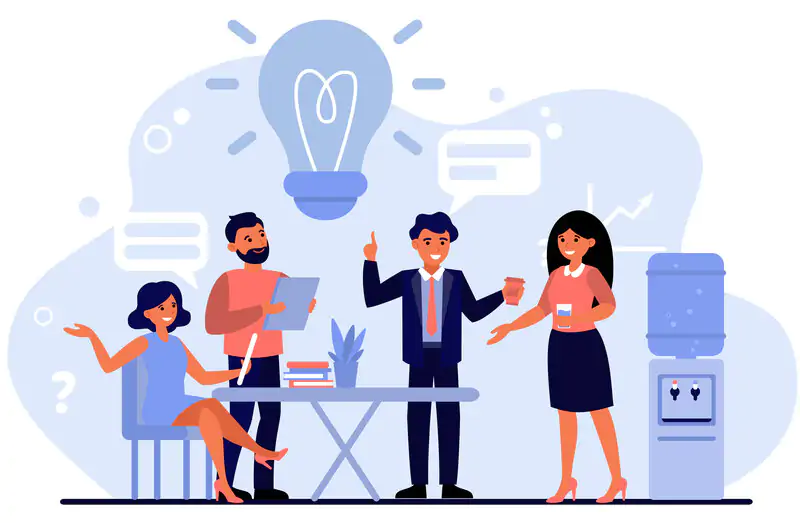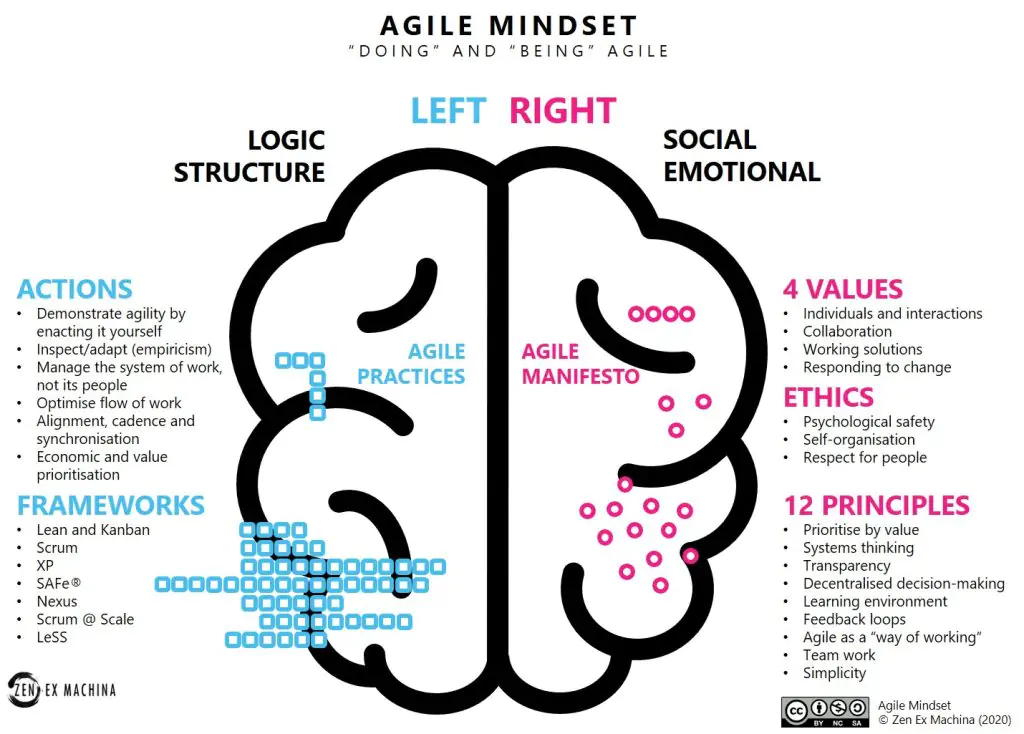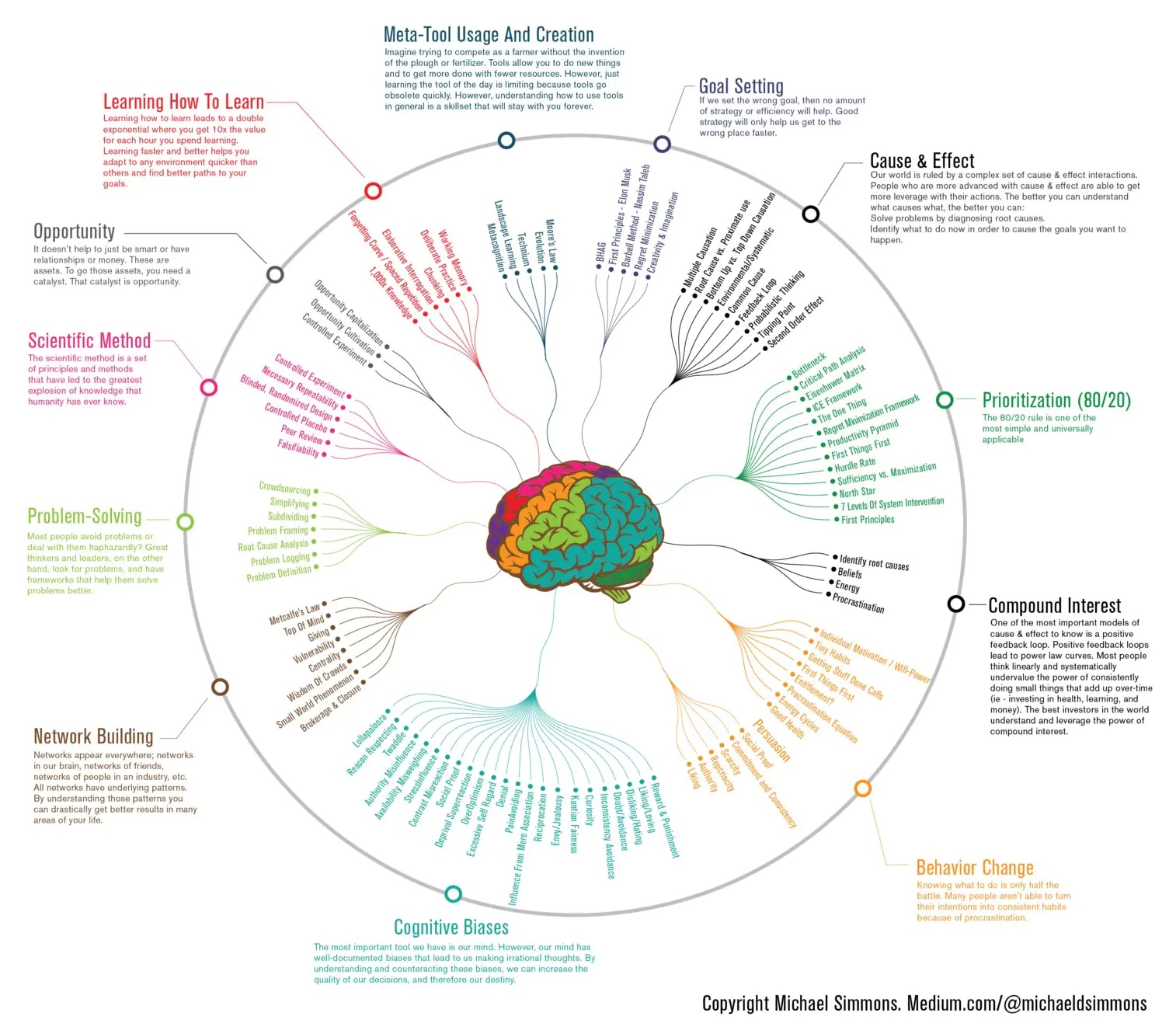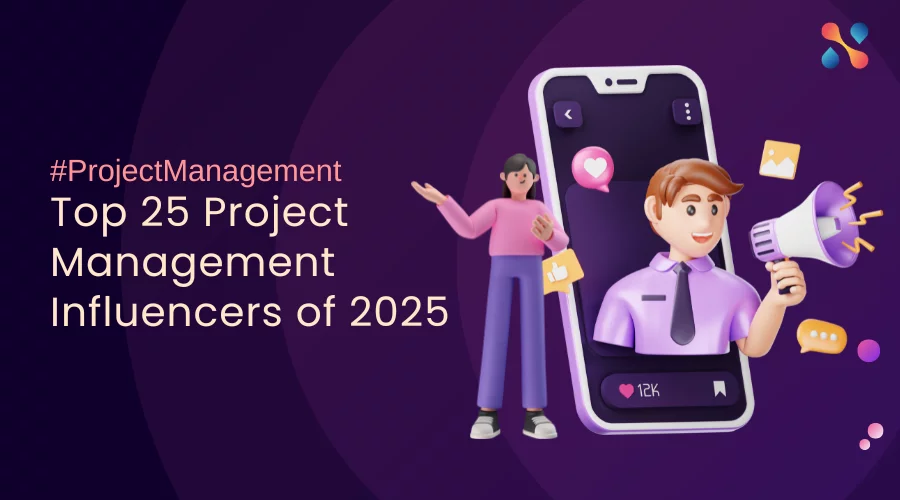We are all too familiar with this scenario – the team follows all the structure, processes and methods that are recommended for Agile, but we have this sinking “feeling” that the team is not Agile, something seems amiss.
This sentiment is aptly captured by many Agile gurus and pundits who say that an Agile Mindset is more important than doing Agile. In a Mckinsey article titled “The Journey to an Agile Organization” the authors state “The importance of investing in culture and change on the journey to agility cannot be overstated. Agile is, above all, a mind-set. Without the right mind-set, all other parts of the agile operating system can be in place, and yet companies will see few benefits. In contrast, when leaders and teams have a strong agile mind-set, then a clear aspiration alone is often enough for a successful agile operating model to emerge.”

In yet another Mckinsey article – “Doing versus Being – Practical lessons on building an agile culture”, it says, “Organizations can do agile by changing their structure, processes, and technology. But they cannot be agile without changing the way people work and interact daily. Enabling a successful, agile transformation requires a fundamental shift in culture.”
What is Agility in teams and business?
Agility is the ability of an individual, team, or organization to adapt and respond rapidly, creatively, effectively, and flexibly to market changes for better outcomes to all stakeholders. In the current VUCA (Volatile, Uncertain, Complex and Ambiguous) environment, both Threats and Opportunities arrive faster than ever.
This is being further accelerated by the disruptive nature of technology that is forcing the reimaging of old ways. Businesses must embrace agility to adapt faster and thrive or face the prospect of becoming irrelevant and perhaps extinct. Among other things, it involves scanning the (business) environment, seeking inputs, detecting changes, analyze, and understanding the impact of the changes, and best responding to the (business) challenges.
What is an Agile Mindset?
Though this term is used widely, it doesn’t have a good, agreed-upon definition. In most cases, it gets defined as a set of attitudes and behaviors that allow for value delivery, being open, facilitating collaboration, teamwork, creative thinking, rapid iteration, continuous improvement, etc. Some others define it even more broadly – the mindset that allows agile to flourish is the agile mindset. Yet others define it as an agile mindset as opposed to a fixed mindset.
Image Src: zenexmachina.com
We are in a strange quandary. We say that the agile mindset is the most important thing for being agile, but we don’t clearly understand this. However, one thing we can be sure of is that to be truly Agile, an organization needs to operate in an environment and culture that reinforces this objective.
I attempt to explore this in a slightly different dimension. I want to dig a bit deeper and perhaps take a psychological and neurobiological perspective. For example, instead of saying that we need to have an attitude of being open and change, why not go deeper and ask what psychological and neurobiological processes make this happen?
What does it take to be open and change?
The ability to change our minds lies at the heart of being agile. In fact, being agile, one would argue, really pushes the idea even further. It essentially means that we are open to changing our minds all the time.
Let’s be honest. All of us know for a fact that changing our minds, mental models, and beliefs on anything is extremely tough.
The question that begs to be asked is why is it so difficult to do this? There are a few common reasons that we can think of –
- Inherent Bias – Some of our inherent biases make it difficult to change our minds. Often, most of us are not even aware of these biases as they work below our awareness. In this case, the biases at play could be the confirmation bias, anchoring bias, and availability bias. These biases prevent us from taking in new evidence, information, and data, thus making it difficult at the very gateway of change. For example, confirmation bias is the tendency to interpret and recall information in a way that confirms our prior beliefs or values. All of us ignore contrary information. This is especially true for deeply held beliefs that may have served us well.
- Lack of psychological safety – Implicit in being ready to change is that some of the prior understanding, strategies, directions, and decisions need to change or are outright wrong currently. Humans have a tough time accepting their mistakes, especially in a high-stakes, competitive, dog-eat-dog work environment.
Why the inherent bias?
Let us dig a bit deeper and ask why bias happens. The answer to this may lie in the neurobiology of human beings. The current model of how the brain works is by way of continuously making predictions and conjuring up stuff. Yes, you read it right, conjuring up stuff.
These predictions are based on our existing internal mental models that we have created over our lifetime. Based on the context, the brain is making a prediction of the unfolding situation. It then validates the prediction against the input it receives before it acts.
The brain learns most optimally by category creations. It connects new information, new people, or ideas to past experiences. Once the new thing has been put into a category, the brain responds to it the same way it does to other things in that category and context.
Mental Model – Src: Michael Simmons
At the core of this process is the existing mental model. This model has made us successful till now and has served its purpose very well. Changing our mental models can be tough, downright traumatic and invalidating. It is also risky and makes us vulnerable. New inputs are perceived through our existing mental models. In other words, we are always “seeing through tinted glasses”.
The easiest way for us to act therefore will be for the brain to validate the input against our current existing models in a way that conforms to our existing model. Most of our life, our brains end up doing what the philosophers call the “inverse inference” problem. Inverse inference simply means that you are already feeling/ seeing the effect and are trying to go back to understand and interpret the reason or cause for the effect.
Now, this is a tricky problem. Potentially, any number of reasons or causes could be there for the same effect. The brain must then make a choice of the cause. The only source the brain has for making validation and choice are the existing models that may not be accurate or correct for the given context and situation.
Hopefully, you can begin to see that we fail right here at the very beginning, at the gateway for the path to agility. We are in some sense doomed to not having an “agile mindset”. This is the human predicament.
Interestingly and almost paradoxically if the validation fails, the brain corrects itself and updates or corrects its mental model. This is the core process of learning.
Is there a solution?
Changing human and organizational behavior, culture and mindset is a tall order! However, I have the following five recommendations to make a start!
Be aware of our inherent biases – just the awareness that we are all subject to these biases makes us stop in our paths to question and look for them. Rather than being overconfident about our theories and stances, we start to question them.
Empty ourselves, no judgments – By not using the existing models, we essentially need to make the monumental shift of not being very trusting of our default existing mental models. Listening without judgement is a tremendous act of courage and takes lots of effort and practice. When we hear something that we don’t agree with – something that doesn’t fit our existing mental model – we immediately shut ourselves and stop taking in any further inputs and this prevents us from getting essential data and information on the situation.
Be OK to be proven wrong – The typical thinking here is that if we are wrong, it means that we have at least one less thing that we are wrong about. To welcome that our ideas, perspectives, and beliefs are challenged. It greatly helps to have intellectual humility, especially if one is an expert or has lots of experience, and still be curious and accepting of new data and information. This creates psychological safety around us.
Deliberately seek information that doesn’t conform to our point of view – In our busy lives where time and attention are at a premium and where byte size information is what catches our attention, we will have to make a conscious effort to look for information that contradicts our point of view.
Humble inquiry and asking better questions, instead of preaching and telling – Asking humble, open questions opens a gateway for rich data and information to surface that becomes the basis for new decisions.









